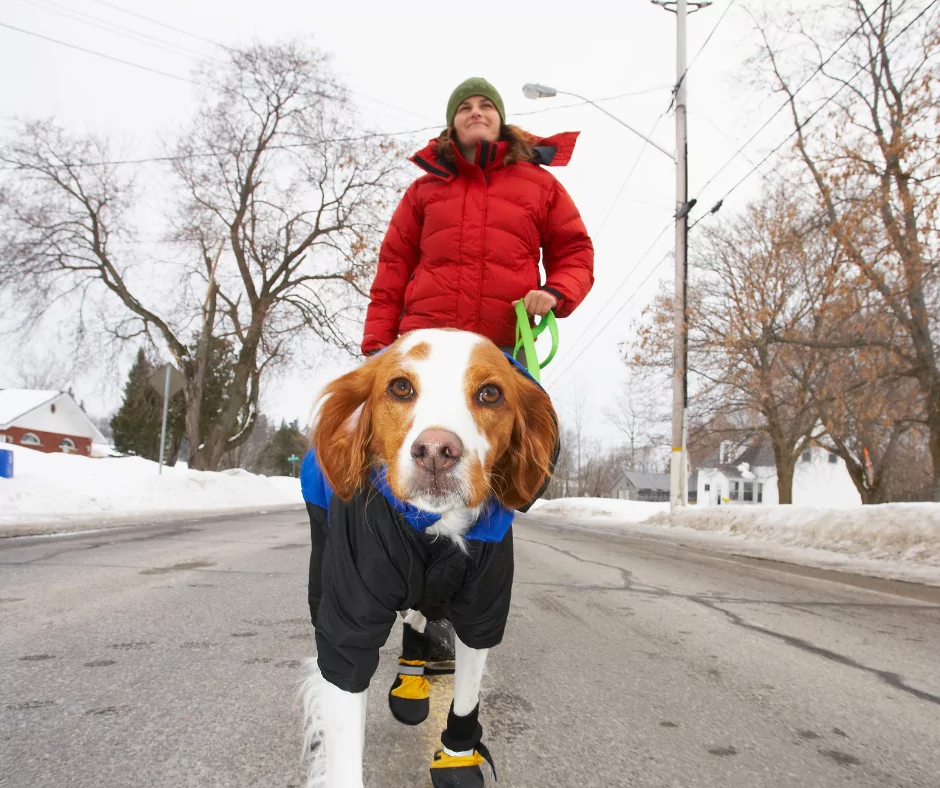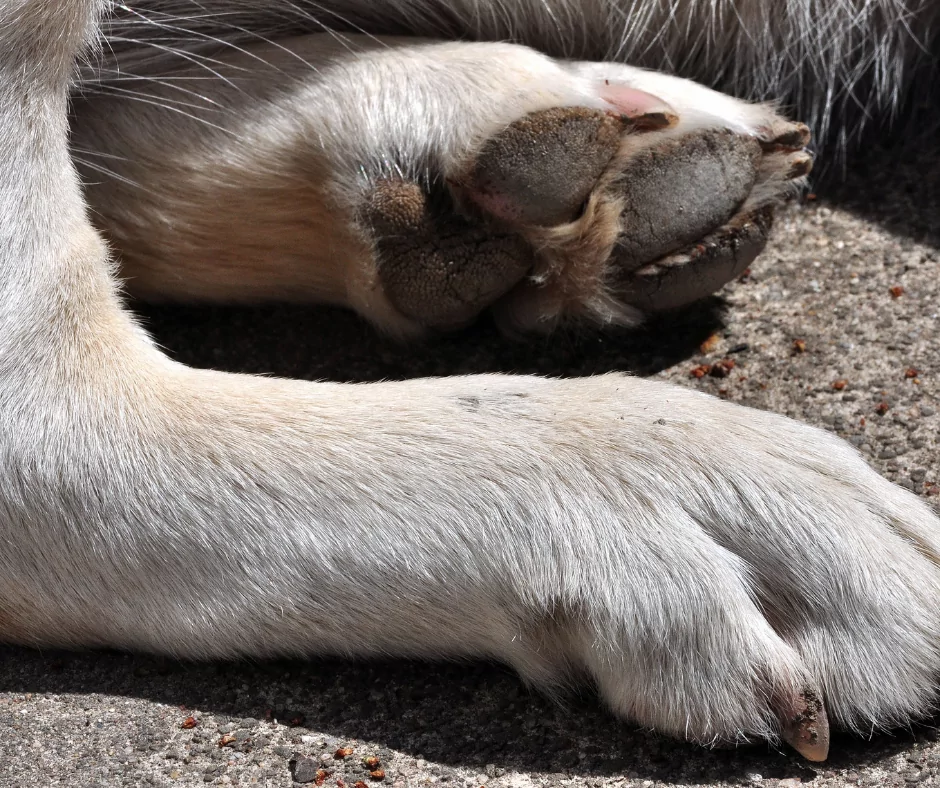Are you faced with the burning (pun intended) question of how hot is too hot for your dog’s paws? The summer heat can bring with it a dangerous possibility of severe burns to your dog’s paws. Though it may seem like the weather is fair, the heat of the asphalt can be climbing to sizzling temperatures. It’s important to educate yourself on the safe temperatures for walking, and how to test for burning asphalt!

How Hot is Too Hot for Dogs?
When it comes to knowing how hot is too hot for your dog’s paws, there are a few things to keep in mind:
- The outside temperature is not indicative of how hot the asphalt is. Though it may be 75 degrees Fahrenheit (24 degrees Celcius), the asphalt can be almost double the temperature! This number only climbs with the warmer it gets outside. It only takes 60 seconds on a 75-degree day to develop burns on your dog’s paws.
- Test the heat of the asphalt on your own skin. Place the palm of your hand or the soles of your feet on the asphalt for seven to eight seconds. If the heat is too much for your skin to bear, it is too hot for your dog’s paws as well.
- Asphalt soaks up the heat all day long, and can only cool at a certain rate. This means that even when the sun is setting, asphalt temperatures can remain high. Just because the sun has set, does not mean you should hold off on testing the asphalt temperature.
- If there is no way to avoid the asphalt for your dog, look into protective footwear for your pet. There are several options to choose from for dog boots and pad care.
We may think that our dog’s paw pads are resilient due to their tough exterior, but they are still extremely susceptible to the dangers of asphalt heat. Burns on the paw pad can be extremely painful, and tough to heal. Avoid any injury by knowing the dangers of the asphalt heat!

The Dangers of Asphalt Burns on Dogs
Most people associate asphalt with blacktop, and for good reason. Asphalt is commonly used as a paving material on roads and in parking lots. Unfortunately, this very same material can be very damaging to all four-legged creatures, even those with fur!
Dogs that run around on asphalt often end up getting covered in the stuff from head to toe. This makes them prone to an uncomfortable condition known as “asphalt burns”. These pavement-related injuries are not to be taken lightly as they can be painful and difficult to heal.
What Are Asphalt Burns?

Asphalt burns look like second-degree burns, but they occur from the dog getting covered in asphalt, rather than from flames. The asphalt is generally hot when it gets on your pet’s skin, and it will stick there until your dog shakes or rolls around in the grass or other suitable surface, removing it.
Because asphalt is a very common material in today’s society, it is important to be aware of the signs and symptoms of this condition, and what you can do to prevent it.
Symptoms of Asphalt Burns in Canines
Asphalt burns are typically recognized by the following symptoms:
Red or brown patches on the skin. These patches generally look like burns as they have scaly texture to them when compared to normal skin. Asphalt burns can, however, contain a pungent smell to them.
The look of cracked skin. As you can imagine, having asphalt on your dog’s body can be uncomfortable, and it will accumulate all over the dog’s skin leaving it more tightly packed and in need of a good massage to shed the offending oily residue. If this becomes too extreme for your pup to bear on its own, you may notice that the skin under the dog’s neck has begun to show cracks.

Loss of hair around the affected area. While the asphalt burns themselves won’t cause a loss of hair, they can cause the follicles to become inflamed or infected, which in turn can lead to hair loss around the area. If you notice your dog losing fur from an area where he has been on asphalt, it is best that you get him checked out by a veterinarian as soon as possible.
Swelling around the affected areas. When exposed to the sun’s UV rays, asphalt can lead to skin irritation and a loss of blood circulation around the affected area. Without proper treatment, this can cause the skin to swell up.
If you enjoyed this info-graphic, educate yourself on heat strokes in dogs on our blog!
